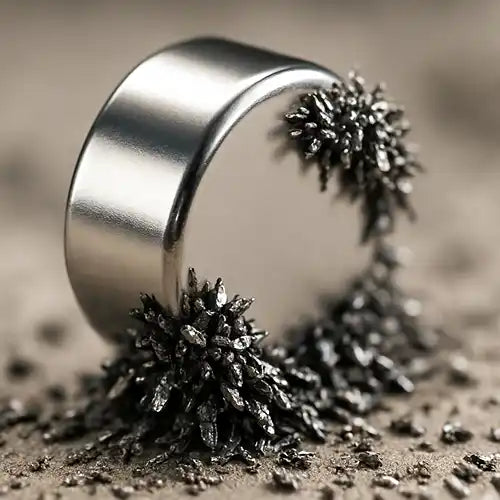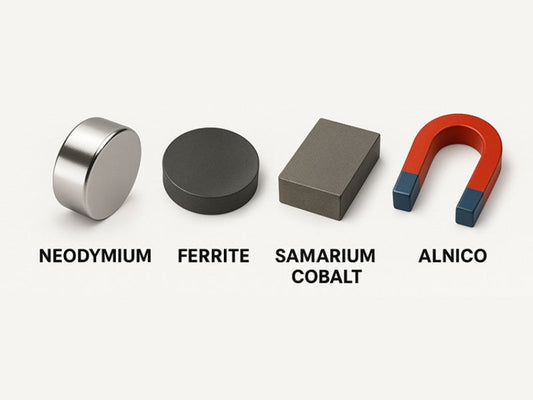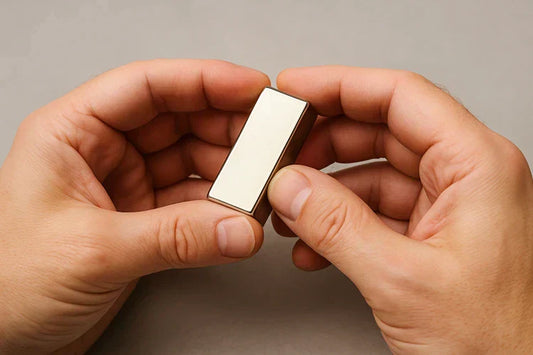Magnet grades help determine a magnet's strength, temperature resistance, and performance characteristics. Different types of magnets have their own grading systems, which can sometimes be confusing.
This guide will explain the magnet grades of the most commonly used permanent magnets: Neodymium, Ferrite (Ceramic), Samarium Cobalt and Alnico.
Neodymium Magnet Grades (NdFeB)
Neodymium magnets are the strongest commercially available magnets. Their grades are written as Nxx, where “xx” refers to the maximum energy product (measured in Mega Gauss Oersteds – MGOe).
Common Grades:
N35, N38, N42, N45, N50, N52
• Higher number = stronger magnet
• N52 is currently one of the strongest commercially available grades
Temperature Resistance Suffixes:
• No suffix: Up to 80°C , M: Up to 100°C , H: Up to 120°C , SH: Up to 150°C , UH: Up to 180°C , EH: Up to 200°C , TH: Up to 230°C
Example:
N35 = Good strength + can handle upto 80°C
N45SH = Higher strength + can handle up to 150°C
Ferrite (Ceramic) Magnet Grades
• Y10 to Y40 (International standard)
• Y30: Most commonly used general-purpose grade
• Y35: Higher strength than Y30, often used in motors
• Max temperature: up to 250°C
Samarium Cobalt Magnet Grades (SmCo)
Two Main Types:
• SmCo5 (1:5): Grades like 16, 18, 20, 22, 24
• Sm2Co17 (2:17): Grades like 26, 28, 30, 32
• Higher number = higher strength
• Temperature resistance: up to 350°C
• Excellent corrosion resistance – no coating needed
Example: Sm2Co17 Grade 32 = high strength and heat tolerance
Alnico Magnet Grades
• Alnico 2 to Alnico 9
• Alnico 5: Most widely used – good strength and stability
• Alnico 8: High coercivity – more resistant to demagnetization
• Max temperature: up to 500°C
Magnet Grade Comparison Table
| Magnet Type | Grade Range | Max Strength | Max Temp | Corrosion Resistance |
| Neodymium | N35 – N52 | ★★★★★ | 80–230°C | Needs coating |
| Samarium Cobalt | 16 – 32 | ★★★★☆ | Up to 350°C | Excellent |
| Ferrite (Ceramic) | C1 – C12 / Y10–Y40 | ★★☆☆☆ | Up to 250°C | Excellent |
| Alnico | Alnico 2 – Alnico 9 | ★★☆☆☆ | Up to 500°C | Good |
Final Thoughts
Choosing the right magnet grade depends on your application, environment, and budget. Here's a quick summary:
• Need maximum strength? → Go with N52 Neodymium
• Working in high temperatures? → Use Samarium Cobalt or Alnico
• Looking for cost-effective general use? → Choose Ferrite
• Want stable magnetic fields over time? → Alnico is ideal
Still unsure about which grade to choose?
Contact us – we’re happy to help you choose the right grade of magnet for your specific needs.


